Deborah J. Ross's Blog, page 88
February 22, 2018
If You Were a Story...
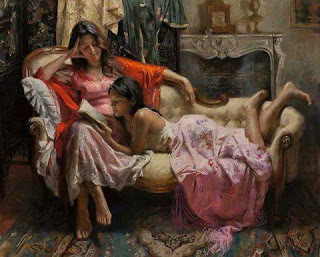
“We are not quite novels.
We are not quite short stories.
In the end, we are collected works.”
― Gabrielle Zevin, The Storied Life of A.J. Fikry

Published on February 22, 2018 01:00
February 21, 2018
Today's Moment of Art
Published on February 21, 2018 01:00
February 20, 2018
Today's Wisdom from Middle Earth
"How could the world go back to the way it was when so much bad had happened? But in the end, it’s only a passing thing, this shadow. Even darkness must pass. A new day will come. And when the sun shines it will shine out the clearer."
-- J.R.R. Tolkien, The Two Towers
-- J.R.R. Tolkien, The Two Towers

Published on February 20, 2018 01:00
February 19, 2018
Lace and Blade 4 Author Interview: Judith Tarr
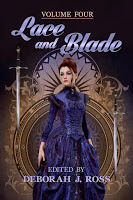 Just in time for Valentine's Day, Lace and Blade 4 offers a bouquet of sensual, romantic, action-filled stories. Order it from online booksellers in ebook and paperback editions.
Just in time for Valentine's Day, Lace and Blade 4 offers a bouquet of sensual, romantic, action-filled stories. Order it from online booksellers in ebook and paperback editions.Deborah J. Ross” Tell us a little about yourself. How did you come to be a writer?
Judith Tarr: I've always been a writer, in the sense of telling stories. I can't remember not doing that.
DJR: What inspired your story in Lace and Blade 4?
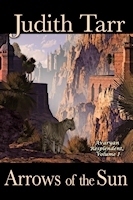
JT: A piece of jewelry. The wonderful Elise Matthesen names all of her pieces, and they're all part of her Writer's Challenge. Those of us who are so inspired can write the story or poem or article or whatever else seems to us to fit the name of the piece.
I bought a beautiful pendant of silver and boulder opal, called "On the Peacock Path." I could see the path and the colors, and realized that it had something to do with the (or a) Peacock Throne. And that led me to Iran, which was ancient Persia. The rest came as I followed the path into the jewel.
DJR: Why do you write what you do?
JT: Because that's what happens when I get ideas. I love history, especially ancient history. I love to mix up genres. I get in trouble for that, but I can't seem to stop.
DJR: How does your writing process work?
JT: Horribly slowly now, but it still works, after a fashion. I get ideas and prompts from all kinds of places. I keep a file of them, multiple files in fact, and when one really needs to have a story, I pull it out and make notes and brainstorm and throw things together and see what comes of it. I do outline, but it's an ongoing, circular, organic process, which grows and changes as the characters wake up and start talking (or often yelling), and the settings make themselves visible, and the gears of story--the friction, the "what does this character want?" and "what are the stakes here?" questions that move it all forward--start to turn. Sometimes in totally unexpected directions.
With this story, I had a visual first, a scene viewed from above. Then I became aware of the viewpoint, and the character started telling me the story. I knew what had to happen in the end, but not how to get there, until I started telling the story. The resolution didn't come clear until I wrote the scene. What I thought was going to happen was not what actually happened at all.
DJR: What have you written recently? What lies ahead?
JT: I've written Dragons in the Earth, a contemporary fantasy with magical
horses, and I'm working, terribly slowly, on a space opera. Various shorter works are in process, as the ideas grow and transform.
DJR: What advice would you give an aspiring writer?
JT: There is no wrong way to write a first draft. Your process is whatever it is. Embrace it. However you get the words on the page, that's right for you. You can worry about the rest of it when you revise.
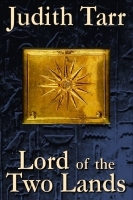 Judith Tarr’s first novel, The Isle of Glass, a medieval fantasy that owed a great deal to Katherine Kurtz’s Deryni books, appeared in 1985. Her short novel, Dragons in the Earth, a contemporary fantasy set in Tucson, was published by Book View Café in 2016. In between, she has written historicals and historical fantasies and epic fantasies and space opera, many of which have been published as ebooks from Book View Café. She has won the Crawford Award, and been a finalist for the World Fantasy Award (for Lord of the Two Lands, her novel of Alexander in Egypt), and the Locus Award. She lives in Arizona with an assortment of cats, a blue-eyed spirit dog, and a herd of Lipizzan horses
Judith Tarr’s first novel, The Isle of Glass, a medieval fantasy that owed a great deal to Katherine Kurtz’s Deryni books, appeared in 1985. Her short novel, Dragons in the Earth, a contemporary fantasy set in Tucson, was published by Book View Café in 2016. In between, she has written historicals and historical fantasies and epic fantasies and space opera, many of which have been published as ebooks from Book View Café. She has won the Crawford Award, and been a finalist for the World Fantasy Award (for Lord of the Two Lands, her novel of Alexander in Egypt), and the Locus Award. She lives in Arizona with an assortment of cats, a blue-eyed spirit dog, and a herd of Lipizzan horses
Published on February 19, 2018 01:00
February 16, 2018
In Troubled Times: Bystander Intervention Training
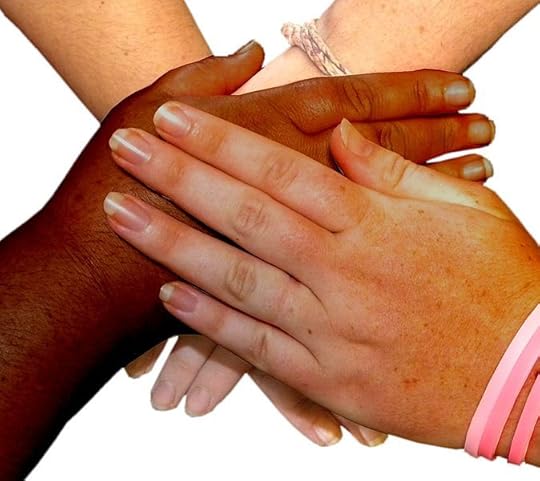 In January 2018, I attended a seminar entitled Stand! Speak! Act! A Community Bystander Intervention Training. The subheading suggested I would learn how to nonviolently support someone who was being harassed. The event was presented by the local chapter of CAIR (Council on American-Islamic Relations), the Muslim Solidarity Group, and the local rapid response team. The idea of becoming a nonviolent ally in directly ameliorating the harm from harassment greatly appealed to me. I found the seminar enlightening, although not always in ways I expected.
In January 2018, I attended a seminar entitled Stand! Speak! Act! A Community Bystander Intervention Training. The subheading suggested I would learn how to nonviolently support someone who was being harassed. The event was presented by the local chapter of CAIR (Council on American-Islamic Relations), the Muslim Solidarity Group, and the local rapid response team. The idea of becoming a nonviolent ally in directly ameliorating the harm from harassment greatly appealed to me. I found the seminar enlightening, although not always in ways I expected.To begin with, although two of the event’s three sponsors were specifically Muslim solidarity groups, the techniques and strategies apply whenever a person is being targeted. Although hate crimes against Muslims have increased drastically (first after 9/11 and then ongoing since the last presidential election), racism (anti-black, anti-Hispanic, anti-Asian) still accounts for the majority of incidents, and anti-LGBTQ violence continues. Most of my friends and relatives who have been harassed have been targeted because of race, sexual orientation, or gender identification, but by far the greatest number have been because of race. The principles of intervention remain the same, and if in the future some other group becomes a target for extremism and violence, allies will step forward.
The workshop drew its guidance and inspiration from the principles set out by Dr. Martin Luther King, Jr.:Nonviolence is a way of life for courageous peopleNonviolence seeks to win friendship and understandingNonviolence seeks to defeat injustice, not peopleNonviolence holds that suffering can educate and transformNonviolence chooses love instead of hateNonviolence believes that the universe is on the side of justice.
It’s tempting to lash out when you or someone you observe is a target of violence, whether physical or verbal. We’ve all seen enough superhero movies to want to jump in, swirling our capes, and single-handedly take on the offender. Outrage at what we perceive to be hateful and wrong fuels our adrenaline. It’s hard to remain calm, to think clearly, and to act from principle instead of reactive emotion. That’s why practice is so important. Harassment can escalate very quickly, and unless we have some experience in how we are vulnerable to engagement, we can become swept up in the confrontation.
Bystander intervention isn’t about confronting the person spewing hatred, it’s about supporting the person being targeted.
The best way to do this is through de-escalation, but in a way that respects the needs and wishes of the targeted person. This means, firstly, not engaging with the attacker: not making eye contact, not responding to their words, not contributing to the drama in any way. It can also mean including other witnesses; one person can video the incident (using their phone, with or without the ACLU app that sends the video directly to them*) or call appropriate help (ambulance, paramedics).
Intervention at its best empowers the person being harassed. (That’s why the workshop avoided referring to them as “victims.”) The principles encourage us as bystanders to approach that person calmly, introduce ourselves, explain that we saw what was happening and we want to offer support. This can mean proposing courses of action like “Would you like me to sit with you?” or “What can I do to help you?” or “Shall we walk together in the other direction?” Or it might mean striking up a friendly conversation that excludes the attacker, like “The weather’s been lovely, hasn’t it?”
The targeted person may not want to interact with us, or may say they’re fine, and as difficult as it is, we should remember the goal is solidarity not rescue.
In practicing various scenarios, I was amazed at my own emotional reaction even though I knew it was an exercise. We split into groups and acted out various situations (a woman in hijab being harassed on a bus, a black person being insulted by someone driving by, a Spanish speaking person being threatened in a language not understood). Tempers flared, and the person playing the target often felt fearful. That happened to me when I was portraying a Spanish-speaking person in a line at a store. Even though I understood the English verbal attacks (based on perceived immigration status), I felt confused, frightened, and trapped. All I wanted was to escape. The participants playing bystanders bunched together to make what felt like a wall of hostiles, even though they were supposed to be portraying allies. Then one approached me from the side, made sure I noticed her, and gently said, “Hola.” I was amazed at how my body relaxed. I engaged with her, feeling I was safe, then asked her to help me leave the store. How much more terrifying must it be when it’s not a practice scenario!
The final caveat was that no one should feel obligated to intervene if they don’t feel it is safe to do so. Emotions can run high in harassment situations, and matters can escalate very quickly. Always trust your instincts. Even if you aren’t able to act at the moment, approaching the targeted person with support and help after the danger has passed can do much to minimize the harm.
*The ACLU’s Mobile Justice app is available in California and other states.

Published on February 16, 2018 01:00
February 15, 2018
Fabulous Times for Astronomy (and Other Science).
We begin with a familiar sight: the Horsehead Nebula. This image was taken by the 3.6-m Canada-France-Hawaii Telescope in Hawaii.

The red glow originates from hydrogen gas predominantly behind the nebula, ionized by the nearby bright star Sigma Orionis. The darkness of the Horsehead is caused mostly by thick dust, although the lower part of the Horsehead's neck casts a shadow to the left. Streams of gas leaving the nebula are funneled by a strong magnetic field. Bright spots in the Horsehead Nebula's base are young stars just in the process of forming.
Cassiopeia A, near the end of its stellar life, as seen by the Chandra X-ray Observatory.

Collapsing from vast cosmic clouds, their nuclear furnaces ignite and create heavy elements in their cores. After a few million years, the enriched material is blasted back into interstellar space where star formation can begin anew. The expanding debris cloud known as Cassiopeia A is an example of this final phase of the stellar life cycle. This false-color image shows the still hot filaments and knots in the Cassiopeia A remnant. Still expanding, the blast wave is seen as the blue outer ring.
The surface of a distant star, thanks to The European Southern Observatory (ESO).

Located 530 light-years from Earth in the constellation of Grus (The Crane), π1 Gruis is a cool red giant. It has about the same mass as our Sun, but is 700 times larger and several thousand times as bright. Our Sun will swell to become a similar red giant star in about five billion years.
Say hello to a new species of giant octopus, the Frilled Giant Pacific Octopus.
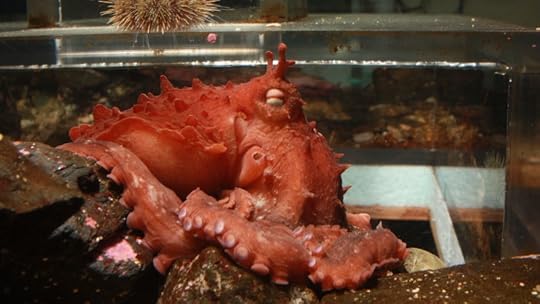
Researchers have now learned that the giant Pacific octopus (GPO)—the largest known octopus on Earth, ranging from California to Alaska to Japan—is actually two species.

The red glow originates from hydrogen gas predominantly behind the nebula, ionized by the nearby bright star Sigma Orionis. The darkness of the Horsehead is caused mostly by thick dust, although the lower part of the Horsehead's neck casts a shadow to the left. Streams of gas leaving the nebula are funneled by a strong magnetic field. Bright spots in the Horsehead Nebula's base are young stars just in the process of forming.
Cassiopeia A, near the end of its stellar life, as seen by the Chandra X-ray Observatory.

Collapsing from vast cosmic clouds, their nuclear furnaces ignite and create heavy elements in their cores. After a few million years, the enriched material is blasted back into interstellar space where star formation can begin anew. The expanding debris cloud known as Cassiopeia A is an example of this final phase of the stellar life cycle. This false-color image shows the still hot filaments and knots in the Cassiopeia A remnant. Still expanding, the blast wave is seen as the blue outer ring.
The surface of a distant star, thanks to The European Southern Observatory (ESO).

Located 530 light-years from Earth in the constellation of Grus (The Crane), π1 Gruis is a cool red giant. It has about the same mass as our Sun, but is 700 times larger and several thousand times as bright. Our Sun will swell to become a similar red giant star in about five billion years.
Say hello to a new species of giant octopus, the Frilled Giant Pacific Octopus.

Researchers have now learned that the giant Pacific octopus (GPO)—the largest known octopus on Earth, ranging from California to Alaska to Japan—is actually two species.

Published on February 15, 2018 01:00
February 14, 2018
BOOK RELEASE DAY! Lace and Blade 4
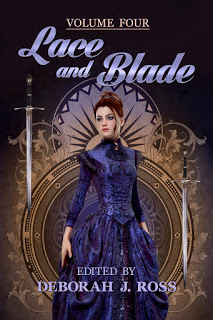 Just in time for Valentine's Day, Lace and Blade 4 offers a bouquet of sensual, romantic, action-filled stories. It's now available in trade paperback, Kindle, Nook, and other ebook editions.
Just in time for Valentine's Day, Lace and Blade 4 offers a bouquet of sensual, romantic, action-filled stories. It's now available in trade paperback, Kindle, Nook, and other ebook editions.Here's the Table of Contents:“At the Sign of the Crow and Quill,” by Marie Brennan“On the Peacock Path,” by Judith Tarr“Sunset Games,” by Robin Wayne Bailey“Sorcery of the Heart,” by Lawrence Watt-Evans“The Butcher’s Boy and the Piri Folk,” by Pat MacEwen“Gifts Tell Truth,” by Heather Rose Jones“A Sword for Liberty,” by Diana L. Paxson“Hearts of Broken Glass,” by Rosemary Edghill“The Game of Lions,” by Marella Sands“The Sharpest Cut,” by Doranna Durgin“Pawn’s Queen,” by India Edghill“The Heart’s Coda,” by Carol Berg“The Wind’s Kiss,” by Dave Smeds
I've been posting interviews with some of the authors. Here's the list, in case you missed any of these delightful chats:
Marie BrennanCarol BergDoranna DurginHeather Rose JonesPat MacEwenDave SmedsMarella SandsLawrence Watt-Evans
Early praise for Lace and Blade 4:
Publisher's Weekly: Dave Smeds’s “The Wind’s Kiss,” ... captures not only the imagination but also the heart, leaving behind a sense of peace and longing. India Edghill’s “Pawn’s Queen” follows a young woman on the path to her own destiny, seamlessly marrying a feast for the senses with the darker whimsies of magic and duty. Marella Sands’s excellent “The Game of Lions” focuses on the strength of bonds between sisters and teammates. The ... stories evoke wonder and excitement.
Kevin O'Brien: This volume contains thirteen stories that range from action tales where romance is at best a subplot, to love stories with nary a hint of violence. Similarly, the romance varies from intense to casual, with both men and women as the aggressors. Also, the level of intrigue ranges from being the point of the plot to being practically non-existent. The level of quality is consistently high, I found no typos or obvious grammatical errors, and those stories set in alternate realities had good world-building; the settings felt real, not thrown together with spit and tissue paper.
And if you enjoyed this anthology, please post a review!

Published on February 14, 2018 01:00
February 13, 2018
Today's Wisdom from Middle Earth
“I will not walk backward in life.”
― J.R.R. Tolkien, The Children of Húrin
― J.R.R. Tolkien, The Children of Húrin

Published on February 13, 2018 01:00
February 12, 2018
Lace and Blade 4 Author Interview With Carol Berg
 Just in time for Valentine's Day, Lace and Blade 4 offers a bouquet of sensual, romantic, action-filled stories. Order it from online booksellers in ebook and paperback editions. The Table of Contents is here.
Just in time for Valentine's Day, Lace and Blade 4 offers a bouquet of sensual, romantic, action-filled stories. Order it from online booksellers in ebook and paperback editions. The Table of Contents is here.Deborah J. Ross: Tell us a little about yourself. How did you come to be a writer?Carol Berg: I grew up reading classics, mysteries, fantasy, science fiction, adventure stories, and spy thrillers, but never imagined I could ever write one for myself. Instead I majored in math, had a short stint as a teacher, had a family, got another degree--this time in computer science—and was halfway through a software engineering career when a fellow engineer (and good friend) convinced me to write a series of letters “in character” so she could practice her writing. It was so much fun, I couldn’t quit! After a number of years writing novels just for myself, reading an article about writing now and then and revising with the newfound knowledge, I wrote a story that was most definitely the best thing I’d written thus far. It felt as if I’d made a huge step forward. My friend agreed, and we stuck our toes in the publishing waters by attending a writers conference. A year later I’d sold three books to the publisher who’s bought them all so far.
DJR: What inspired your story in Lace and Blade 4?
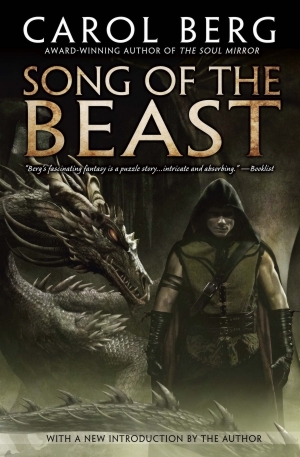 CB: One of my aims when I create new heroes or heroines is to make them real people. I want readers to believe they had a life before walking onto the canvas of my story and will (if the story permits!) have a life when they walk off again. But of course, after the traumas/losses/victories of the story, the nature of that life is often irrevocably changed. Ever since my novel Song of the Beast was published, I’ve had readers asking what became of Aidan McAllister--a scarred, broken singer of visions, who saved his world from the scourge of dragon warfare. At the end of the story, he abandons his friends and his hope of a normal life to lead the beasts into the wild. I decided that it would be fun to satisfy the readers’ curiosity and mine, and so I wrote “The Heart’s Coda. “
CB: One of my aims when I create new heroes or heroines is to make them real people. I want readers to believe they had a life before walking onto the canvas of my story and will (if the story permits!) have a life when they walk off again. But of course, after the traumas/losses/victories of the story, the nature of that life is often irrevocably changed. Ever since my novel Song of the Beast was published, I’ve had readers asking what became of Aidan McAllister--a scarred, broken singer of visions, who saved his world from the scourge of dragon warfare. At the end of the story, he abandons his friends and his hope of a normal life to lead the beasts into the wild. I decided that it would be fun to satisfy the readers’ curiosity and mine, and so I wrote “The Heart’s Coda. “DJR: What authors have most influenced your writing? What about them do you find inspiring? CB: So many! One of the first was Mary Renault, who took the mythological hero, Theseus, and the historical myth, Alexander the Great, and wrote them as fascinating, flawed human beings in worlds that felt real and true. Another Mary--Mary Stewart--showed me the epic story of Merlin and Arthur through a very human Merlin’s personal lens. And then there’s Ellen Kushner, who created true magic with exquisite prose and deep emotion in her novel, Thomas the Rhymer. Alongside these three are many mystery and thriller writers like Dick Francis and Len Deighton who instilled a love of complex stories and exciting adventures, and fantasy writers like Roger Zelazny and Poul Anderson who taught me the delights of building magical worlds.
DJR: Why do you write what you do, and how does your work differ from others in your genre?CB: Fortunately, I’ve been able to write the stories I love to read--complex, twisty, filled with mysteries and magic and events with big stakes. I love making my secondary worlds intensely real, and developing characters who are as complex, twisty, and surprising as the plot, so that one can reread the stories and discover new pieces. I strive to create immersive fiction, where the reader feels deeply drawn into the story action, experiencing the action along with the characters, not just reading about it. Thus, despite portraying events that are epic in scale, I use the very personal lens of a single narrator (or two.) I have a fondness for certain tropes of the genre—like portals and parallel worlds, an occasional dragon , as well as the fae and flawed heroes who are not quite sure of their place in the world. I like to think I turn all those tropes on their heads.
DJR: How does your writing process work?CB: I’m an organic story developer, that is I start with a character in a situation and enough thinking about the world, cultures, and characters to put down the first scene. The act of writing that scene gives me ideas for moving forward in plot, characters, and world development, so that by the time I’m halfway in, I’ve got lots of notes about what needs to happen next. Every day, I read what I wrote the previous day, getting it right enough I can charge forward toward a climax that, so far, has made itself apparent by the time I get there. Revision is my friend and delight!
DJR: What have you written recently? What lies ahead?CB: My most recent novels are the two volumes of the Sanctuary Duet: Dust and Light and Ash and Silver, the story of a sorcerer/artist whose portraits set off a political firestorm in a war-riven kingdom, propelling him into a destiny he had never imagined. Since I finished that series, I’ve been dabbling with short fiction related to my existing worlds (five worlds to date). Besides “The Heart’s Coda,” I’ve just had a Navronne story called “The Book of Rowe” published in an anthology titled Hath No Fury. I’ve also written a novella set in my Rai-kirah world and a short story set in my Collegia Magica world, and hope to find a suitable home for them. Meanwhile I’m developing a new mythos and a new cast of characters for a new long form series.
DJR: What advice would you give an aspiring writer?CB: Read, read, read. Write, write, write. Learn the craft. Think deeply, then think again--harder. Persist. Be proud of what you write.
Former software engineer Carol Berg never expected she could write one novel, much less fifteen. Nor did she expect to be a three-time winner of the Colorado Book Award or to hear that her books had been read on the slopes of Denali, underneath the Mediterranean Sea, and in the war zone of Iraq. And she certainly never expected to see her name in the winners’ list for the Mythopoeic Fantasy Award for Adult Literature alongside those of her literary heroes Mary Stewart, JRR Tolkien, Neil Gaiman, and Patricia McKillip. Her novels, like the quasi-Age-of-Reason double-agent, murder-mystery series called the Novels of the Collegia Magica, regularly receive starred reviews from Publishers Weekly and Kirkus Reviews, using words like compelling and superbly realized. Carol lives and writes in the foothills of the Colorado Rockies and on the internet at <www.carolberg.com>

Published on February 12, 2018 01:00
February 9, 2018
Guest Post: Nancy Jane Moore on Fighting and Gender
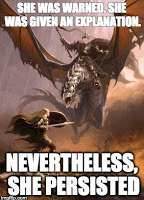 At a recent meeting of my writers’ group, we discussed fight scenes while critiquing an early draft of my novel in progress. The discussion went something like this:
At a recent meeting of my writers’ group, we discussed fight scenes while critiquing an early draft of my novel in progress. The discussion went something like this:“Women fight differently from men,” one of the guys said in pointing out that the sword fight scenes didn’t vary much.
I didn’t think he was referring to the inaccurate stereotype that women can’t fight, but I also didn’t think his point applied, so I said – speaking as a long-time martial artist and instructor as well as a writer – “In my experience, that’s not always the case, especially with weapons.”
And he replied, “Yeah, but you’re big.”
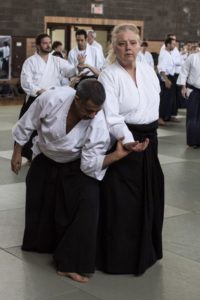 I let it go at that, because he was right that the fight scenes needed work, but it bothered me. After some reflection, I realized what the problem was: If my experience isn’t key to discussions about how women fight simply because I’m a woman about the size of the average U.S. man, then the issue isn’t biological sex or gender; it’s body size and build. The average man may be bigger than the average woman, but there are plenty of small men – and big women – in the world. Also, there are some people who don’t fit into standard gendered categories, and they, too, come in a variety of body types. As writers, if we make assumptions about fighting styles based on sex or gender, we’re not going to create scenes that reflect the complexity of real fights.
I let it go at that, because he was right that the fight scenes needed work, but it bothered me. After some reflection, I realized what the problem was: If my experience isn’t key to discussions about how women fight simply because I’m a woman about the size of the average U.S. man, then the issue isn’t biological sex or gender; it’s body size and build. The average man may be bigger than the average woman, but there are plenty of small men – and big women – in the world. Also, there are some people who don’t fit into standard gendered categories, and they, too, come in a variety of body types. As writers, if we make assumptions about fighting styles based on sex or gender, we’re not going to create scenes that reflect the complexity of real fights.There is only one situation in which writers should give some consideration to the gender of their fighters, and that’s if they are creating a world in which the culture puts distinct rules on gender behavior. Most current societies give girls and boys very different signals from an early age, with the girls getting the message – incorporating it into their bodies – that they aren’t capable of handling themselves physically in dealing with men, and the boys, regardless of size or skill, learning that they have power over women. In a world in which calling men and boys “girls” (or much less acceptable words for female) is a major insult, women who fight will have to deal with the cultural dynamics.
So if you’re writing a story that includes women warriors, you must give some consideration to societal rules. Is it a society that generally accepts both men and women as soldiers and fighters or is it one that assigns very different roles to each gender, so that a woman fighter must struggle against society to make her place? Women who grow up being told they aren’t capable of competing against men have to deal with that while they’re learning to fight. Men who grow up being told that women are physically inferior have difficulty accepting that women can be good at the arts of war.
However, if your world assumes a higher level of gender equality, women fighters aren’t going to struggle with that particular demon and men aren’t going to make wrong assumptions. In my novel in progress, the culture recognizes both men and women as soldiers. So for my work, and others like it, gender differences are not relevant to fighting styles. But body type is always relevant.
Here are a few ideas about how different body types affect fighting gleaned from my thirty-eight years in martial arts:
Big, strong people can succeed on strength and size, as long as the person they’re fighting isn’t either stronger than they are or more skilled as a fighter. Sheer muscle works for them.Smaller people, who often fight someone larger than themselves, must learn good technique because they can’t rely on strength. You can’t out-muscle someone who is stronger than you are. But a smaller person can throw a larger one because it’s easier for them to get under the big person’s center. Every size has advantages.With weapons such as swords and staffs, it’s important to consider wrist strength as well as overall strength. Many of the more subtle moves with weapons require flexibility in the wrist. It is better for a person with small wrists to use a lighter weapon – something I learned the hard way. If your fighting system is built around big, heavy weapons, give your fighters big wrists along with big shoulders.Flexibility can also be quite important and does not always correlate with body type. I trained in karate years ago with a man built like the proverbial fireplug – short, wide shoulders, big torso, short legs – and he could kick me in the head with no problem. Having good knees and being flexible can give a tall person the option of using size or dropping low, which is another useful way to play against type.The only fighters who are going to stand there and trade punches and blocks are young, strong people or, even more likely, drunks. Anyone with skill, not to mention anyone getting on in years, is going to rely on getting out of the way whenever they can.Joint techniques such as those taught in Aikido or ju-jitsu require almost no strength when done properly and can take even the strongest person down.A weak person who knows how to grab using their center rather than their arm strength can stop the movement of a stronger person. And by the way, a grab is best done using the smaller fingers of the hand to grip, not the thumb and forefinger, which are easier to twist away from.
Now that I’ve given the issue some thought, I’m off to rewrite my fight scenes. I think I’ll make one of my male characters short, but very quick and flexible, and one of my women tall and muscular. It’s always fun to play against type.
•••
Nancy Jane Moore is the author of the science fiction novel The Weave as well as a
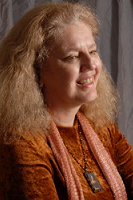 number of shorter works of fiction. She holds a fourth-degree black belt in Aikido and has also trained in Karate and Tai Chi. For several years she was the chief instructor of the University of Maryland Aikido Club and she also taught regularly at Aikido Shobukan Dojo in Washington, D.C. She now lives in Oakland, California, with her sweetheart and his cats.
number of shorter works of fiction. She holds a fourth-degree black belt in Aikido and has also trained in Karate and Tai Chi. For several years she was the chief instructor of the University of Maryland Aikido Club and she also taught regularly at Aikido Shobukan Dojo in Washington, D.C. She now lives in Oakland, California, with her sweetheart and his cats.
Published on February 09, 2018 01:00





